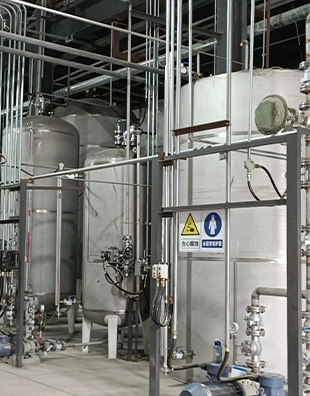PAM Chemical Applications for Effective Water Treatment Solutions and Enhancements
PAM Chemical for Water Treatment An Overview
Water treatment is a crucial process that ensures the safety and quality of water for various uses, from drinking to industrial applications. One of the most effective and widely employed chemicals in water treatment is Polyacrylamide (PAM). As a flocculant, PAM plays a significant role in coagulation processes, helping to remove suspended solids and impurities from water. This article explores the properties, applications, benefits, and environmental considerations associated with PAM in water treatment.
What is PAM?
Polyacrylamide, commonly known as PAM, is a synthetic polymer derived from acrylamide. It exists in both anionic and cationic forms, allowing it to be tailored for specific water treatment needs. Anionic PAM is typically used in industrial applications, while cationic PAM is suitable for municipal water treatment. The polymer's ability to absorb water and form gels makes it an excellent choice for improving the clarity and quality of water.
How Does PAM Work?
The mechanism by which PAM functions as a flocculant involves several key processes. Once added to the water, PAM molecules interact with suspended particles, forming chains that bridge the gaps between these particles. This polymeric network encourages the aggregation of particles into larger flocs, which can then settle to the bottom of the treatment vessel or be easily removed via filtration. This process enhances sedimentation rates, allowing for efficient removal of turbidity and other impurities.
Applications of PAM in Water Treatment
Polyacrylamide is utilized across various sectors in water treatment applications
1. Municipal Water Treatment PAM is extensively used in municipal wastewater treatment plants to improve the removal of suspended solids and organic matter. Its effectiveness helps municipalities meet regulatory standards for water quality.
2. Industrial Applications Industries such as paper manufacturing, mining, and oil extraction use PAM to manage water quality in their processes. For example, in the mining sector, PAM assists in the clarification of process water, promoting environmentally friendly practices.
pam chemical for water treatment

3. Agricultural Uses In agriculture, PAM is utilized in irrigation systems to enhance water retention in soil and reduce erosion. It prevents soil dispersion, ensuring that water infiltrates effectively and nutrients are retained.
4. Recycling and Reuse of Water PAM plays an instrumental role in water recycling processes, enabling the treatment of wastewater for reuse in irrigation or industrial applications. This promotes sustainable water management practices.
Benefits of PAM
The advantages of using PAM in water treatment are manifold
- Efficiency PAM significantly speeds up the sedimentation process, leading to quicker water treatment cycles. - Cost-Effectiveness Reduced treatment times and improved removal rates can lower operational costs for treatment facilities. - Versatility The different forms of PAM (anionic, cationic, and non-ionic) allow for tailored solutions to specific water treatment challenges. - Enhanced Water Quality PAM effectively reduces turbidity and improves water aesthetics, making it suitable for potable water production.
Environmental Considerations
While PAM has numerous benefits, there are environmental concerns associated with its use. The residual acrylamide monomer, which is a neurotoxin, requires careful handling to avoid contamination of waterways. Therefore, it is crucial for facilities to use PAM products that comply with safety and environmental regulations. Additionally, as with any chemical used in large quantities, monitoring and controlling PAM’s application is necessary to mitigate potential impacts on aquatic ecosystems.
Conclusion
PAM has revolutionized the field of water treatment, offering efficient and effective solutions for a range of applications. Its ability to enhance water clarity and quality makes it an indispensable tool in both municipal and industrial settings. However, the potential environmental impacts necessitate responsible use and rigorous safety practices. As water scarcity becomes an increasing concern worldwide, the role of PAM in sustainable water management will continue to grow, providing a path toward cleaner, safer water for all. By embracing modern chemical solutions like PAM, we can tackle the persistent challenges of water treatment in an evolving environmental landscape.
-
Understanding Polycarboxylic Acids: Properties, Applications, and Future PotentialNewsJul.28,2025
-
Scale Inhibitor Explained: How to Protect Your System from Limescale and Hard Water DamageNewsJul.28,2025
-
Scale and Corrosion Inhibitors: Essential Chemicals for Industrial Water System ProtectionNewsJul.28,2025
-
Polyaspartic Acid: A Biodegradable Polymer for Sustainable ChemistryNewsJul.28,2025
-
Isothiazolinones: A Versatile Antimicrobial Class with Industrial Power and Regulatory ChallengesNewsJul.28,2025
-
A Deep Dive into 2-Phosphonobutane-1,2,4-Tricarboxylic Acid (PBTC)NewsJul.28,2025





